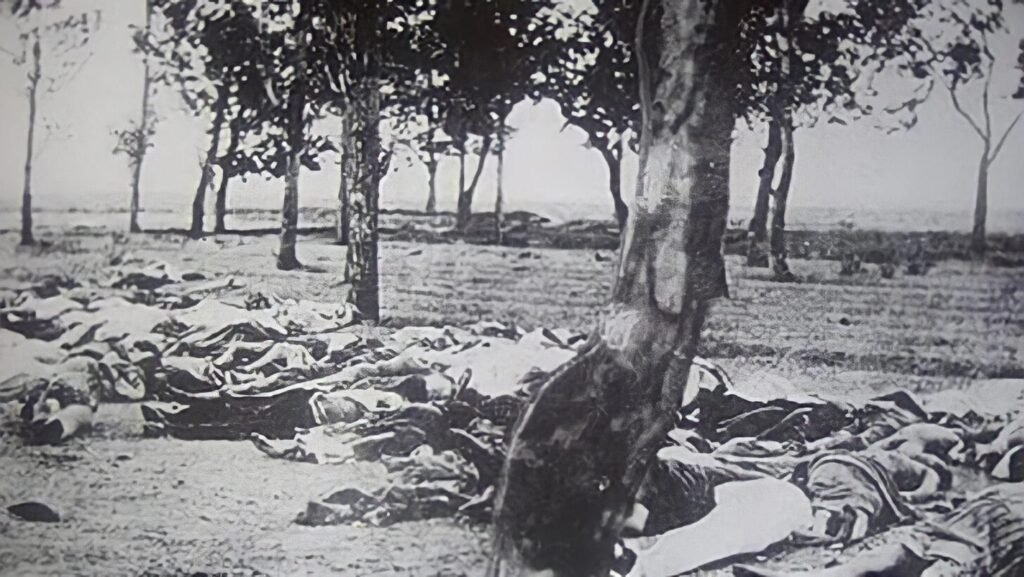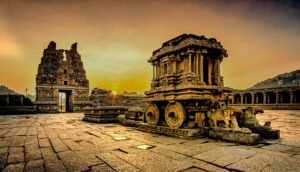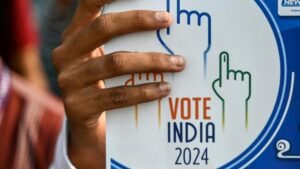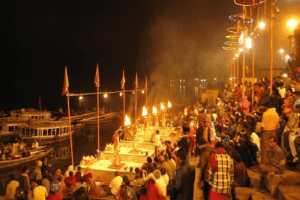I. Introduction
The 1971 Bangladesh Liberation War, leading to the creation of Bangladesh, is a pivotal event in South Asian history. It was a war marked by immense suffering, political upheaval, and a dramatic redefinition of national borders.

This conflict, originally rooted in the ethnic and linguistic differences between East and West Pakistan, rapidly escalated into one of the most brutal episodes of violence in the 20th century, particularly against the Hindu minority in East Pakistan. The systematic persecution of Hindus during the war, often described as genocide, is a significant yet frequently overlooked aspect of this conflict. This article delves into the atrocities committed against Hindus, the international response, and the subsequent creation of Bangladesh, shedding light on a dark chapter in the history of the Indian subcontinent.
II. Historical Background
The roots of the 1971 Liberation War can be traced back to the partition of British India in 1947, which led to the creation of two independent dominions: India and Pakistan. Pakistan was divided into two geographically and culturally distinct regions: West Pakistan (modern-day Pakistan) and East Pakistan (modern-day Bangladesh). Despite being the more populous of the two, East Pakistan was consistently marginalized politically and economically by the West Pakistani leadership, which primarily hailed from the western part of the country. This imbalance in power and the imposition of Urdu as the national language over Bengali, the dominant language of East Pakistan, fueled discontent and a growing sense of Bengali nationalism.
The situation worsened during the 1950s and 1960s as East Pakistanis felt increasingly disenfranchised. The 1970 general elections proved to be a turning point. The Awami League, led by Sheikh Mujibur Rahman, won a decisive majority, securing 160 out of 162 seats allotted to East Pakistan in the National Assembly. However, the West Pakistani military and political leadership were unwilling to cede power to the Awami League, leading to a political impasse that quickly descended into violence.
Hindus in East Pakistan had already been facing discrimination and violence since partition, but their situation became increasingly precarious as the political crisis deepened. They were often viewed with suspicion by the West Pakistani government, which considered them to be sympathetic to India and the Indian National Congress. This suspicion would have devastating consequences once the conflict escalated into a full-scale war.
III. The Onset of the Liberation War
The Liberation War began in earnest on the night of March 25, 1971, with Operation Searchlight, a brutal military crackdown by the Pakistani army aimed at suppressing the growing independence movement in East Pakistan. The operation targeted political activists, students, and intellectuals, with Dhaka University being one of the first sites of mass killings. However, the violence was not limited to the Bengali Muslim population; Hindus were specifically targeted as well, with many being singled out for their perceived loyalty to India.
The atrocities committed during Operation Searchlight set the tone for the rest of the conflict. The Pakistani military, often aided by local militias such as the Razakars, Al-Badr, and Al-Shams, launched systematic attacks on Hindu communities across East Pakistan. These groups were notorious for their brutality, engaging in mass killings, rapes, and forced conversions of Hindus. The aim was not only to crush the independence movement but also to eradicate the Hindu population, who were seen as a threat to Pakistan’s Islamic identity.
The violence against Hindus was widespread and horrific. In many cases, entire villages were wiped out, with survivors fleeing to India as refugees. It is estimated that around 10 million refugees fled to India during the conflict, the majority of whom were Hindus. The scale of the violence was such that it has been described by many scholars and human rights organizations as a genocide. The atrocities committed against Hindus were part of a broader pattern of ethnic cleansing aimed at changing the demographic composition of East Pakistan.
IV. Atrocities Against Hindus During the War

The atrocities committed against Hindus during the 1971 Liberation War were systematic and widespread, characterized by mass killings, forced conversions, and other forms of brutal violence. The targeting of Hindus was not incidental but rather a calculated strategy employed by the Pakistani military and their local collaborators to terrorize and eliminate the community.
One of the most notorious examples of violence against Hindus occurred in the town of Chuknagar, where, on May 20, 1971, thousands of Hindu refugees were massacred by the Pakistani army. The refugees, who were trying to escape to India, had gathered at a marketplace when they were attacked. Eyewitnesses recount how the soldiers indiscriminately fired into the crowd, killing men, women, and children. The exact number of casualties is unknown, but estimates range from 5,000 to 10,000.
Forced conversions were another common tactic used to terrorize the Hindu population. In many cases, Hindus were given the choice of converting to Islam or facing execution. Those who refused were often subjected to brutal violence before being killed. In some instances, Hindu women were abducted and forcibly married to Muslim men, a tactic aimed at humiliating the community and erasing their cultural identity.
The violence against Hindu women was particularly horrific. Rape was used as a weapon of war, with countless Hindu women being subjected to sexual violence by the Pakistani military and their allies. Many of these women were later killed or forced into prostitution. The trauma experienced by these women has had a lasting impact, with many survivors continuing to suffer from physical and psychological scars.
International observers and human rights organizations documented the atrocities committed against Hindus, but their reports often fell on deaf ears. The Pakistani government consistently denied any wrongdoing, portraying the conflict as a legitimate effort to maintain national unity. However, the scale and brutality of the violence were impossible to hide completely, leading to widespread condemnation from the international community.
V. International Response and Media Coverage
The international response to the atrocities committed during the 1971 Liberation War was mixed, with some countries and organizations speaking out against the violence while others remained silent. India’s role was particularly significant, both in terms of providing refuge to millions of displaced people and in eventually intervening militarily to bring an end to the conflict.
The Indian government, led by Prime Minister Indira Gandhi, was one of the most vocal critics of the Pakistani military’s actions. India opened its borders to the refugees fleeing the violence, most of whom were Hindus, and provided them with food, shelter, and medical care. The refugee crisis put immense pressure on India’s resources, leading the government to seek international support and intervention.
Despite India’s efforts to raise awareness about the atrocities, the global response was initially lukewarm. The United States, under President Richard Nixon, was a close ally of Pakistan and was reluctant to criticize the actions of the Pakistani military. This reluctance was partly due to Cold War geopolitics, with the U.S. viewing Pakistan as a crucial ally in its efforts to counter Soviet influence in the region. As a result, the U.S. administration downplayed reports of genocide and continued to provide military and economic aid to Pakistan throughout the conflict.
In contrast, the media played a crucial role in bringing the atrocities to light. Journalists like Anthony Mascarenhas, who managed to escape from Pakistan and publish an exposé in the Sunday Times, provided the world with a first-hand account of the horrors unfolding in East Pakistan. Mascarenhas’s report, published in June 1971, was one of the first to describe the systematic campaign of violence against Hindus and other minorities, galvanizing international public opinion against Pakistan.
The United Nations also came under pressure to act, with India pushing for international recognition of the genocide and for intervention to stop the violence. However, the UN was slow to respond, hampered by political divisions among its member states. Eventually, the humanitarian crisis and the growing evidence of atrocities forced the international community to take notice, leading to increased diplomatic pressure on Pakistan.
VI. The Creation of Bangladesh
The culmination of the 1971 Liberation War was the creation of the independent state of Bangladesh. The Indian military’s intervention, launched in December 1971, was decisive in tipping the balance of the conflict. Within weeks, the Pakistani forces in East Pakistan were overwhelmed, and on December 16, 1971, they formally surrendered to the Indian and Mukti Bahini forces, marking the end of the war.
The new nation of Bangladesh was born out of the ashes of a brutal conflict, with Sheikh Mujibur Rahman, the leader of the Awami League, becoming its first president. The war had taken a heavy toll on the country, with millions dead or displaced and much of the infrastructure in ruins. The Hindu community, which had suffered disproportionately during the conflict, faced significant challenges in the new nation.
In the immediate aftermath of the war, there was hope that Bangladesh would become a secular and inclusive state, as envisioned by its founders. The new constitution of Bangladesh, adopted in 1972, included provisions for secularism, democracy, and equal rights for all citizens, regardless of religion. However, the legacy of the war and the deep scars left by the violence meant that achieving these ideals would be a difficult task.
Many Hindus who had fled to India during the war chose not to return, fearing further persecution and violence. Those who did return often found their homes and properties occupied or destroyed. The Hindu population in Bangladesh, which had been around 20-22% in 1971, began to decline sharply in the years following the war, a trend that has continued in the decades since.
Despite the challenges, the Hindu community in Bangladesh has continued to play an important role in the country’s cultural and political life. However, they remain vulnerable to periodic outbreaks of violence and discrimination, a reminder of the unresolved issues stemming from the 1971 war.
VII. Long-term Impact and Legacy
The 1971 Liberation War and the atrocities committed against Hindus have left a lasting impact on the region. In Bangladesh, the war is remembered as a moment of national liberation, but also as a time of immense suffering. The violence against Hindus, in particular, is a painful chapter that continues to influence the country’s social and political landscape.
The demographic changes resulting from the war have had long-term implications for Bangladesh. The sharp decline in the Hindu population has contributed to a more homogenous religious landscape, but it has also meant the loss of a vibrant and diverse community that had been an integral part of Bengali society for centuries. This demographic shift has also had political consequences, with the Hindu community often finding itself marginalized in a country where Islam is increasingly dominant.

The legacy of the 1971 war also extends to India-Pakistan relations. The war marked the third major conflict between the two countries since their independence and significantly altered the balance of power in the region. The creation of Bangladesh dealt a severe blow to the idea of a unified Muslim-majority Pakistan, undermining the two-nation theory that had justified the partition of India in 1947. The war also left a deep sense of mistrust and hostility between India and Pakistan, a legacy that continues to shape their relations to this day.
In the broader context of global human rights, the 1971 war is often cited as an example of the international community’s failure to prevent genocide and protect vulnerable populations. The lack of timely intervention and the initial reluctance of major powers to acknowledge the scale of the atrocities committed against Hindus and other minorities have been criticized by historians and human rights advocates. The war has thus become a case study in the challenges of preventing and responding to mass atrocities, with lessons that remain relevant in the contemporary world.
VIII. Conclusion
The 1971 Liberation War and the atrocities committed against Hindus are a significant but often overlooked chapter in the history of South Asia. The war not only led to the creation of Bangladesh but also highlighted the deep-seated religious and ethnic tensions that have plagued the region for decades. The violence against Hindus during the war was part of a broader pattern of persecution that has left lasting scars on the community and the region as a whole.
As we reflect on the 53rd anniversary of the war, it is important to remember the victims and to learn from the past. The legacy of the 1971 war continues to influence the political and social dynamics of South Asia, and understanding this history is crucial for building a more just and peaceful future. The story of the war is not just a story of liberation, but also a story of suffering, resilience, and the enduring struggle for human rights and dignity.
Bibliography and References
- Mascarenhas, Anthony. The Rape of Bangladesh. Vikas Publications, 1971.
- Bass, Gary J. The Blood Telegram: Nixon, Kissinger, and a Forgotten Genocide. Vintage Books, 2013.
- Rummel, R.J. Death by Government. Transaction Publishers, 1994.
- Schendel, Willem Van. A History of Bangladesh. Cambridge University Press, 2009.
- Sisson, Richard, and Leo E. Rose. War and Secession: Pakistan, India, and the Creation of Bangladesh. University of California Press, 1990.
- Totten, Samuel, and William S. Parsons, eds. Century of Genocide: Critical Essays and Eyewitness Accounts. Routledge, 2009.
- Genocide Watch. “Genocide in Bangladesh, 1971,” Genocide Watch Report, 2008.
- UNHCR. “The State of the World’s Refugees 2000: Fifty Years of Humanitarian Action.” Oxford University Press, 2000.
- Mookherjee, Nayanika. The Spectral Wound: Sexual Violence, Public Memories, and the Bangladesh War of 1971. Duke University Press, 2015.








